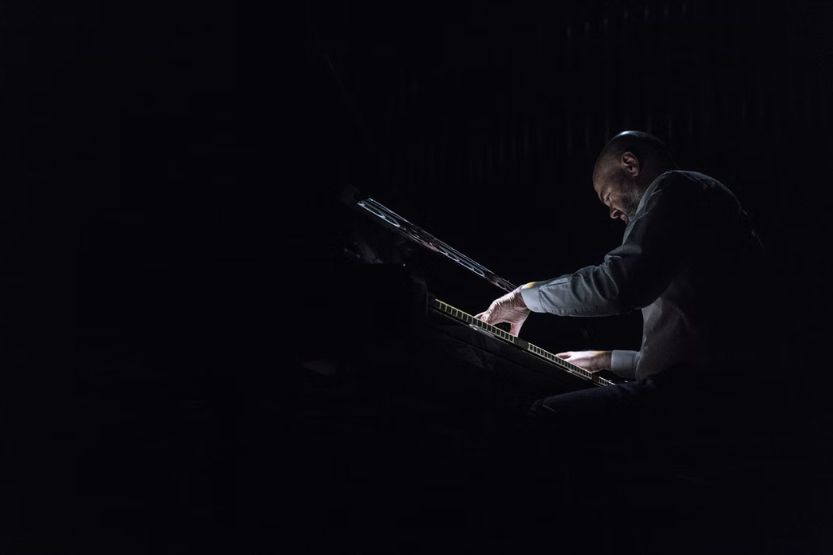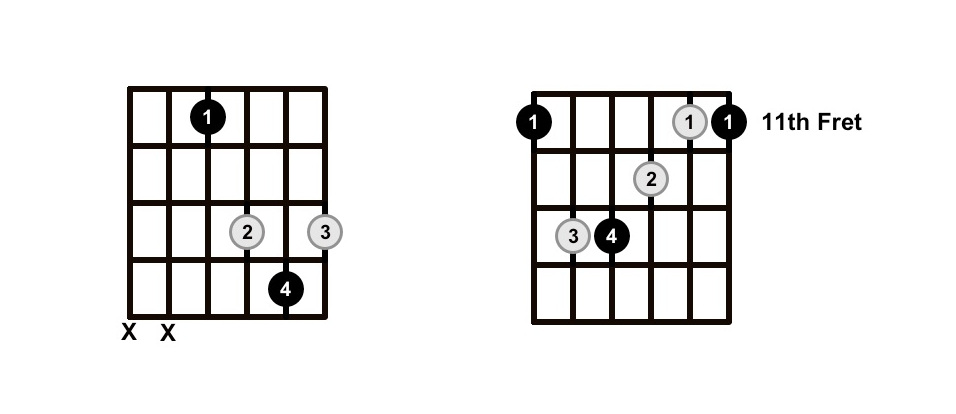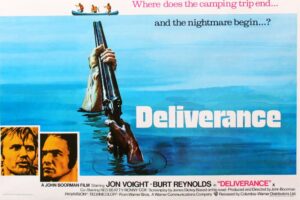It’s always good to know your scales and chords, whether you’re a beginner or a seasoned/professional musician. Some pop and rock musicians use the D# major scale, so knowing how it works crucial for any musician who wants to learn how to improvise.
In theory, the D# key is a major scale key called D# major. But in practice, it’s not used as often. It can be a bit more challenging to play than other major scales, but it’s worth learning to use the D# key because it’s still a part of music theory.
Read on to learn about D# major and how it’s used in music, including how to play it on guitar and piano.
What Is D# Major?

When you’re playing the piano, there’s a good chance you won’t use the D# key as much as some other keys. That doesn’t mean it’s not essential!
The D# key is one of the major scales. But in practice, it’s not used as often as others. Why is that? It takes a little more effort to play than some other scales do.
But don’t let that discourage you from learning how to use it! Just because it’s harder doesn’t mean it isn’t worth knowing.
You’ll find D# major helpful, especially when playing songs with many sharps or flats. You’ll surely be glad you learned it while playing your favorite song and need that D# key to get through it.
What Is the D# Major Scale?
The D# major scale has two double sharps and five sharps. An “x” is used to indicate a double sharp. The following are the seven notes:
- D#
- E#
- Fx
- G#
- A#
- B#
- Cx
D sharp and E flat is the same. E flat major has three flats; that’s why it’s easier to play than D#. If you’re still learning the major scales, focus on E flat first. But if you want a challenge, you can learn both at the same time!
Which Scales Work Over D# Major?
Over the D# Major chord, the most effective scales to use when it comes to soloing, improvising, and creating melodies for songwriting are as follows:
- D# major scale – It’s the D sharp chord’s default scale.
- D# major pentatonic scale – In any context, this scale works over the D sharp major chord most of the time.
- D# major Blues – This scale is quite helpful for Blues.
- D# Lydian mode – In specific contexts, you can use this scale over the D sharp chord if you want to include a hint of jazz.
What Are the Chords in D Sharp Major?
Enharmonically, D# (D sharp major) is the same as Eb major. Because D sharp’s notes are confusing, the Eb chord is more commonly used. The D# chord contains:
- D#
- Fx or F double sharp
- A#
The Fx note in the D# chord can also be interpreted as the G note. Because G is an open string on the guitar, the chord may be played as an open chord. But D sharp as an open chord isn’t practical or useful. Most guitarists play D# on the 6th fret root five-barre chord.
D# Chord Theory on the Guitar
D#, Fx, and A# make up the D# major chord. And playing the root or 1st, 3rd, and 5th notes of the D sharp major scale form the D# chord.
As with all major chords, the D# chord is made up of the following intervals:
- Major 3rd (from the root note)
- Minor 3rd
- Perfect 4th (back to the root note)
D# major’s first chord is D#, and the seven chords in the key of D# major are:
- D#
- E#m
- Fxm (F double sharp)
- G#
- A#
- B#m
- Cx diminished
Standard Shape of the D# Major Chord
Playing the 1st fret root 5 D sharp barre chord is the usual way to play the D sharp chord. In the example below, the 1st finger doesn’t form a barre but plays the root note instead:

Is There an Easy Version of the D# Chord?
Yes, there is. This version is played on 1st three guitar strings. It’s the standard open D chord form shifted up one fret. If the barre chord form of the D# chord is too tricky, try this simplified shape:

D# Major Barre Chord Shapes
Either starting can play the D# barre chord on the eleventh fret with a root six barre chord shape or the sixth fret with the shape of a root five barre chord major:

Exploring the D Sharp Major Triads
Most D# or Eb chords are played using the barre chord forms. Exploring the chord with triads is also helpful. These include inversions as well. You can play the D# major chord in 3 different ways:
- Root position D# major triad – D# – Fx – A#
- (1st inversion) D# major triad – Fx – A# – D#
- (2nd inversion) D# major triad – A# – D# – Fx
Here’s how you can play the D sharp major triad in 6 different ways:
1st, 2nd, and 3rd ways

4th, 5th, and 6th ways

Which Keys Include the D Sharp Chord?
These keys contain the D# chord:
| Keys | Chords |
| D# Major | D# – E#m – Fxm – G# – A# – B# – Cxdim |
| A# Major | A# – B#m – Cxm – D# – E# – Fxm – Gxdim |
| G# Major | G# – A#m – B#m – C# – D# – E#m – Fxdim |
Other Useful Shapes of the D# Major Chords
The shapes below are alternatives to the D# major chord. These aren’t the most popular D# major shapes, but they’re used enough as exciting alternatives:

Substituting D# Major Chords
You can substitute the D# major chord with the following chords:
- D# suspended 4
- D# suspended 2
- D# add 9
Additionally, you can use the D# major chord to replace more complicated chords like:
- D# major 7
- D#7
- Other extension chords with D sharp as the root note (excluding minor chords)
Chord Diagrams for D# Major
Here are ten ways to play the D# major chord. You can use these diagrams to understand how the chord is formed and how it relates to other chords:
D# Major Chord (D# – Fx – A#)
1st and 2nd Diagrams

3rd and 4th Diagrams

5th and 6th Diagrams

7th and 8th Diagrams

9th and 10th Diagrams

Again, what key is D# Major? The D# major scale is a theoretical key with five sharps, two double-sharps. This means that the key can contain either double flats or sharps.
How Do You Play the D# Major Chord?

Piano vs. Guitar Chords
Both piano and guitar chords sound the same but are played differently. The two instruments are very similar in that they are both stringed instruments.
The standard piano (both a stringed and percussion instrument) has 88 keys, while the guitar has only six strings. However, both instruments sound differently when played by a musician.
Here’s what D# major on the piano looks like:

And here’s a YouTube video on how to play D# major on the piano.
How to Play the D# Major Chord on Guitar
- Put your 1st finger on the 6th fret of the 5th string.
- Next, put your 2nd finger on the 8th fret of the 4th string.
- The next step is to put your 3rd finger on the 8th fret of the 3rd string.
- Now, put your 4th finger on the 8th fret of the 2nd string.
- Strum the first five strings without strumming the 6th string.
These steps show how to play the D# major chord on the guitar. When in doubt, review and look at these instructions, or watch YouTube videos on how to play this guitar chord correctly.
Here’s an example of a YouTube video showing you how to play D# major on the guitar.
What Key Is the Same as D Sharp Major?
The Eb major scale sounds the same and has the same note pitches played in the same order. This means the scales are enharmonic, and Eb major can replace the D-sharp major scale.
Enharmonic Equivalents – D# Major / Eb Major
The D# key is an enharmonic equivalent of the Eb major key. They both play the same notes but with different names.
D# Major and E♭ Are Interchangeable
Any chord or scale made from one can be played with the other without any problems. So if you’re looking for a tune for your next open mic night, don’t stress: both will work fine! Are you just starting? It might be easier to learn how to play one than the other.
The video below shows three fingerings or positions for the Eb or D# major guitar chord. Try picking the one that’s best for you, or better yet, learn all three.
12 Popular Songs Played in the Key of D# Major / E♭ Major
A lot of popular songs are played in D#/Eb major. It’s a very versatile key that works well in musical genres like rock and pop. To help demonstrate this point, we’ve put together a list of some of the most popular songs played in D#/Eb major:
1. Your Song – Elton John (1970)
This is one of the most well-known piano songs ever written, and it’s no surprise. Elton John’s 1970 hit about a beautiful love song reached #8 on the U.S. Billboard Hot 100 chart and has been covered by artists such as Tina Arena and Ellie Goulding.
2. How Deep Is Your Love – Bee Gees (1977)
You don’t have to be a fan of disco music to appreciate the catchy tune of “How Deep Is Your Love.” This song was released in 1977 by the Bee Gees and has since become a classic pop song.
3. Sweet Child O’ Mine – Guns N’ Roses (1988)
This song was the 3rd single from Guns N’ Roses’ debut album, Appetite for Destruction, in 1988. “Sweet Child O’ Mine” is an excellent choice if you want to play a D# major – E♭ major guitar song with an unforgettable melody and some challenging riffs.
4. Every Rose Has Its Thorn – Poison (1988)
Another classic rock song released in 1988 is “Every Rose Has Its Thorn” by the band Poison. The song became a hit, instantly reaching number one on the Billboard Hot 100 and being certified 5x platinum.
This song is a must-learn for any beginner guitarist, especially those with a rosewood fretboard guitar.
5. Beauty and the Beast – Celine Dion (1991)
No need to look further than “Beauty and the Beast” if you’re looking for the perfect Disney song to play in D# major / Eb major.
This 1991 hit was written by Alan Menken and Howard Ashman for the animated film of the same name. It reached #9 on the U.S. Billboard Hot 100 chart and won an Academy Award for Best Original Song.
6. You’re Still the One – Shania Twain (1998)
A classic country love song, “You’re Still the One,” is one of Shania Twain’s most popular songs. It was released in 1998 and peaked at #2 on the Billboard Hot 100 chart, making it her first top 10 hits.
7. Ray of Light – Madonna (1998)
This song was Madonna’s second single from her album Ray of Light and reached #5 on the U.S. Billboard Hot 100 chart. “Ray of Light” is a good choice if you want to play a D# major piano song that’s upbeat and fun, with an unforgettable melody.
8. Only Time – Enya (2000)
Another beautiful song called “Only Time” from Enya was released in 2000 and reached #10 on the U.S. Billboard Hot 100 chart.
It’s an excellent choice if you’re looking for a D# major piano song that’s both calming and inspiring. It features a simple yet beautiful melody, which makes it easy to learn how to play the piano.
9. Here Without You – 3 Doors Down (2002)
This song was the 3rd single from 3 Doors Down’s second album, Away from the Sun, in 2002. It’s a great piece if you want to play a D# major – E♭ major piano/guitar song with an easy-to-follow rhythm pattern.
10. Bad Day – Daniel Powter (2005)
“Bad Day” is the way to go if you’re looking for a song in D sharp major / E flat major with some serious staying power.
This 2005 hit by Daniel Powter reached #1 on several charts and sold over 2 million copies worldwide. “Bad Day” was also nominated for several Grammy Awards, including Record of the Year.
11. Pumped Up Kicks – Foster The People (2010)
This song was the first single from Foster The People’s debut album, Torches, and reached #3 on the U.S. Billboard chart. It’s a quirky and fun D# major piano/guitar song with an underlying message about gun violence in America.
12. Thinking Out Loud – Ed Sheeran (2014)
Another excellent choice for beginners is “Thinking Out Loud” by Ed Sheeran. The song was released in 2014 and has been certified 5x platinum since then.
It’s a great song to play on acoustic guitar. Also, it will help you get familiar with chord progressions, strumming patterns, fingerpicking techniques, and other essential skills needed for playing the instrument.
Frequently Asked Questions – D Sharp Major Musical Scale

Does D Sharp Major Exist?
There’s a D sharp major scale, but it’s rarely used. This key has no natural notes. All notes are either sharps or double sharps, like any sharp key aside from C# and F#.
Is D# Major the Same as Eb Major?
Eb major has the same note pitches as D# major. It only has five flats, making it much more practical. Enharmonic is the correct term here.
Where’s D Sharp Major on the Piano?
D# is a black piano key. D# and Eb are enharmonic because they have the same pitch or sound. It’s called sharp because it’s one half-tone / semitone from the white note. The E note then follows D#.
Conclusion – D# Major Full Guide
To recap, the D sharp major scale has two double sharps and five sharps. And the most effective scales that work over D# major are:
- D# major scale (the default scale)
- D# major pentatonic scale
- D# major Blues
- D# Lydian mode
The D# chord contains:
- D#
- Fx or F double sharp
- A#
Additionally, D# major’s first chord is D#, and the seven chords in the key of D# major are:
- D#
- E#m
- Fxm (F double sharp)
- G#
- A#
- B#m
- Cx diminished
Also, remember that D# major is the same as E♭ major. Because D sharp’s notes are confusing, the E♭ chord is more commonly used.
Here are the steps to playing the D# major chord on the guitar:
- Put your 1st finger on the 6th fret of the 5th string.
- Next, put your 2nd finger on the 8th fret of the 4th string.
- The next step is to put your 3rd finger on the 8th fret of the 3rd string.
- Now, put your 4th finger on the 8th fret of the 2nd string.
- Strum the first five strings without strumming the 6th string.
Now that you know how to play D# major, you can use it to learn songs or create some of your own. I hope this complete guide helps you start learning how to play it on your instrument of choice.
Read next:

![Accordion-like Instruments [Full List] accordion like instruments](https://musicalinstrumentpro.com/wp-content/uploads/2022/09/accordion-like-instruments-150x150.jpg)
![The Stratosphere Guitar Parts [Full Review] The Stratosphere Guitar Parts](https://musicalinstrumentpro.com/wp-content/uploads/2021/11/The-Stratosphere-Guitar-Parts-150x150.jpg)


![Acciaccatura and Appoggiatura Grace Notes [Guide] acciaccatura and appoggiatura grace notes](https://musicalinstrumentpro.com/wp-content/uploads/2022/09/acciaccatura-and-appoggiatura-grace-notes-150x150.jpg)

![Read more about the article What Is Music Without Lyrics Called [and Popular Instrumentals]](https://musicalinstrumentpro.com/wp-content/uploads/2022/09/what-is-music-without-lyrics-called-300x200.jpg)

